Chesapeake Bay Storyteller - Natural History
 Kids and adults alike love our Chesapeake Bay Natural History Storyteller Charters. They're an excellent way to see a living laboratory to appreciate how a complex ecosystem is formed and operates. It's education through fun - with a sense of awe and adventure. We cater the science content to our guests - from young kids just interested in animals or youngsters needing a summer experience to write about for school, to adolescents thinking of a career in science and even research-level biologists.
Kids and adults alike love our Chesapeake Bay Natural History Storyteller Charters. They're an excellent way to see a living laboratory to appreciate how a complex ecosystem is formed and operates. It's education through fun - with a sense of awe and adventure. We cater the science content to our guests - from young kids just interested in animals or youngsters needing a summer experience to write about for school, to adolescents thinking of a career in science and even research-level biologists.
 We tell the Chesapeake Bay's story by visiting key types of habitats. As Storytellers, we both show you the features of the Chesapeake Bay and explain what they mean. Your tour is a documentary - it's your own episode of 'Planet Earth' and 'Blue Planet'! So, join us on an expedition in the footsteps of Sir David Attenborough. It's a family experience you won't forget!
We tell the Chesapeake Bay's story by visiting key types of habitats. As Storytellers, we both show you the features of the Chesapeake Bay and explain what they mean. Your tour is a documentary - it's your own episode of 'Planet Earth' and 'Blue Planet'! So, join us on an expedition in the footsteps of Sir David Attenborough. It's a family experience you won't forget!
As well as individual habitat types, the tour includes the scenic South River and the famous Thomas Point Shoal Lighthouse. Plus, we can include a relaxing anchor break by Quiet Waters Park: parents and kids definitely enjoy that, especially if there's time to go in the water with our paddle boards! On the 7 hour charter, we can go over to Rhode River islands and sand bar for fun with our water toys. It's biology and fun!
The Chesapeake Bay and its Habitats
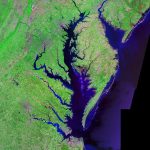 Did you know that the Chesapeake Bay only formed 10,000 years ago as the ice melted at the end of the last Ice Age and sea levels rose to flood what was then the valley of the Susquehanna River? Chesapeake water only reached Annapolis 5,000 years ago! This inundation filled the Chesapeake Bay to become one of the most species-rich and productive ecosystems in the world - 16,000 square miles with over 4,000 miles of coastline. Now, we have thousands of creeks, rivers and seagrass prairies. Because the Bay is so shallow, light permeates to the sea bed and plants proliferate to create shelter and food. Summer warmth transforms the ecosystem into an explosion of life as All Creatures Great and Small enter the bay from the Atlantic or emerge from the muddy depths to feed and breed. It's the Serengeti, Amazon and Great Barrier Reef all rolled into one.
Did you know that the Chesapeake Bay only formed 10,000 years ago as the ice melted at the end of the last Ice Age and sea levels rose to flood what was then the valley of the Susquehanna River? Chesapeake water only reached Annapolis 5,000 years ago! This inundation filled the Chesapeake Bay to become one of the most species-rich and productive ecosystems in the world - 16,000 square miles with over 4,000 miles of coastline. Now, we have thousands of creeks, rivers and seagrass prairies. Because the Bay is so shallow, light permeates to the sea bed and plants proliferate to create shelter and food. Summer warmth transforms the ecosystem into an explosion of life as All Creatures Great and Small enter the bay from the Atlantic or emerge from the muddy depths to feed and breed. It's the Serengeti, Amazon and Great Barrier Reef all rolled into one.
Piers, Pilings, Rocks, Trees and Snags: Glebe Creek Cove
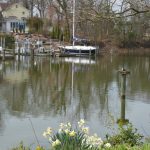
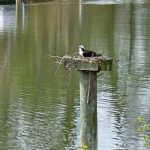
First, we'll retrieve our gentle creature traps right off the marina dock. You'll see a myriad of species: we'll learn to use a Field Guide to identify the shrimp and fish species like white and yellow perch, catfish and blue gill, as well as blue crabs and jellies - everyone gets released unharmed. These types of fish are indigenous and remain here year round.
 As we leave the marina, we'll pass the nest of our apex predator - the osprey. They'll have one or two babies that demand food incessantly. Another major predator in the shallows is the great blue heron, a stalking hunter. Cormorants and mergansers can be seen too. Chances are you'll see the kingfishers, egrets and green herons that hunt small fish from the lower branches of the trees. Ducks and geese feed on the weeds attached to pilings and roots, while some species dive to hunt for fish.
As we leave the marina, we'll pass the nest of our apex predator - the osprey. They'll have one or two babies that demand food incessantly. Another major predator in the shallows is the great blue heron, a stalking hunter. Cormorants and mergansers can be seen too. Chances are you'll see the kingfishers, egrets and green herons that hunt small fish from the lower branches of the trees. Ducks and geese feed on the weeds attached to pilings and roots, while some species dive to hunt for fish.
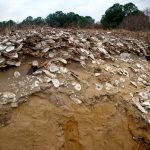 Down the creek, we'll pass a Native American oyster midden left by the Piscataway and Accohannock people who lived here since the end of the ice age. They fished these tributaries for blue crabs and fish, we well as oysters. Wild fowl and mammal bones are also found in these piles of left-over meals.
Down the creek, we'll pass a Native American oyster midden left by the Piscataway and Accohannock people who lived here since the end of the ice age. They fished these tributaries for blue crabs and fish, we well as oysters. Wild fowl and mammal bones are also found in these piles of left-over meals.
Where land meets Water: Marsh, Swamp and Wetland - Glebe Creek
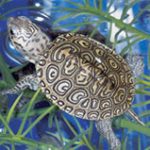 We'll visit Glebe Creek to see how woodland transitions into Wetland and water, and see the differences between Marsh and Swamp. We'll see this in Harness Creek by the shores of Quiet Waters Park too.
We'll visit Glebe Creek to see how woodland transitions into Wetland and water, and see the differences between Marsh and Swamp. We'll see this in Harness Creek by the shores of Quiet Waters Park too.
Creeks and Rivers - Harness Creek, Crab Creek and the South River
In Glebe Bay, Harness Creek and Crab Creek we'll get to see calm waters that serve as a massive breeding grounds for the fish that migrate here from the Atlantic to breed - striped bass, herring and shad in particular. These pelagic fish are a major food source for our mammalian visitors, the schools of bottlenose dolphins that wait in the South River for food to emerge.
Beaches, Sand Bars and Intertidal Flats - Selby Bay
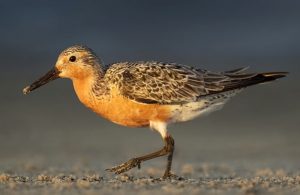 Beaches and intertidal flats are a favorite of shore birds, including migrants to the Arctic. Red knots, sanderlings, oystercatchers, sandpipers and even godwits feed on the eggs of horseshoe crabs, fish and abundant invertebrates that burrow in the mud or swim in the shallows.
Beaches and intertidal flats are a favorite of shore birds, including migrants to the Arctic. Red knots, sanderlings, oystercatchers, sandpipers and even godwits feed on the eggs of horseshoe crabs, fish and abundant invertebrates that burrow in the mud or swim in the shallows.
Oyster Bars - Thomas Point Shoal
 By the Thomas Point Shoal Lighthouse, we'll stop to see watermen fish for crabs and oysters. There's a fish trap nearby - the same design as creative by the Piscataway and Accohannock peoples, probably 5,000 years ago!
By the Thomas Point Shoal Lighthouse, we'll stop to see watermen fish for crabs and oysters. There's a fish trap nearby - the same design as creative by the Piscataway and Accohannock peoples, probably 5,000 years ago!
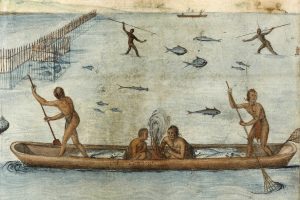 Open Water - The Thomas Point Shoal Lighthouse and the Chesapeake Bay
Open Water - The Thomas Point Shoal Lighthouse and the Chesapeake Bay
As the Bay widens from the South River to form the open water of the estuary, you'll see the home of massive schools of alewives, striped bass, blue fish, spot and croaker, and their predators bottlenose dolphins, brown pelicans and terns.
Beyond the Charter
Chesapeake Bay Yacht Charters is very proud to be a Chesapeake Bay Storyteller. We want your experience today to be a catalyst to becoming a much needed Chesapeake Bay ambassador, steward and advocate. The environment and wildlife you have seen today is an integrated story of life. Our life too. Our home. Our responsibility.
Congratulations! You have been Sir David Attenborough for a day!
